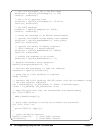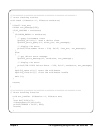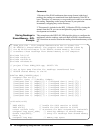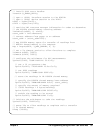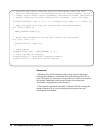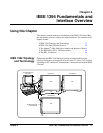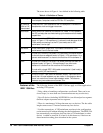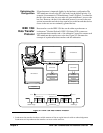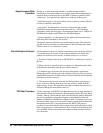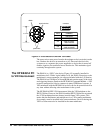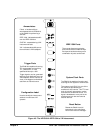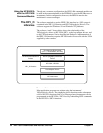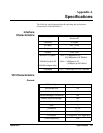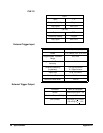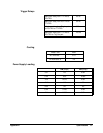
60 IEEE 1394 Fundamentals and Interface Overview Chapter 4
Asynchronous Data
Transfers
During an asynchronous data transfer, a variable amount of data is
transferred to an explicit address in real time, and an acknowledgement is
returned. Data is transferred across the IEEE 1394 bus in packets called
“subactions.” An asynchronous subaction is made up of three parts:
* arbitration sequence - the period when a device requests control of the bus
in order to transmit a data packet.
* data packet - the data packet consists of a data prefix that contains
information about the transaction, the data itself (e.g. VXI instrument
commands), and a data end signal. The maximum packet size is 1 kByte for
200 Mbit host adapters and 2 kBytes for 400 Mbit adapters.
* acknowledgement - a code returned by the (addressed) data destination
indicating the action taken by the receiver.
The periods between subactions are called subaction gaps. The subaction
gap allows devices that have not had control of the bus during the current
“fairness interval” to arbitrate for control.
Fair Arbitration Protocol The fair arbitration protocol is based on the fairness interval shown in Figure
2. A fairness interval consists of one or more subactions in which data
packets are transferred over the bus. A fairness interval is as follows:
1. The interval begins when devices (HP E8491A’s) arbitrate for control of
the bus.
2. When a device is granted control, it transfers its data packet and is then
disabled from arbitrating until the next fairness interval.
3. A subaction gap occurs after the previous data packet is transferred.
During this period, remaining devices arbitrate for the bus. The next device
granted the bus transfers its data packet and is then disabled from arbitrating
until the next fairness interval.
4. The fairness interval ends after each device has had an opportunity to
access to the bus and the arbitration reset gap, which is longer than the
subaction gap, occurs. The arbitration reset gap re-enables each device for
arbitration during the next fairness interval.
VXI Data Transfers To take advantage of the IEEE 1394 data transfer protocol, large amounts of
data should be transferred between VXI instruments and the PC using block
transfers. During a block transfer, data is divided into the packets described
previously; the number of packets depends on the amount of data and
whether a 200 Mbit or 400 Mbit host adapter is used. Compared to protocols
that transfer data one byte or one word at a time, transfer speed between the
instrument and the PC is increased because the IEEE 1394 protocol
overhead is associated with the fairness interval and with each packet, rather
than with each byte or word transferred. Thus, transfer speeds (bits/second)
over the IEEE 1394 bus increase as the amount of data transferred (block
size) increases.



